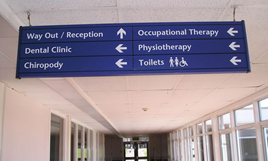
Aim and objectives:
Mapping linguistic landscapes is used to gain insights in how people navigate health systems and to improve health system environments.
Target group:
It is a tool for health providers, managers, and decision-makers to enhance service design and user journeys.
Method:
Using linguistic landscape analysis as a diagnostic, relevant questions may include:
- how many and what languages occur on signs in a specific public space?
- are the signs monolingual, bilingual, multilingual and in what ways, i.e. what combinations of languages occur?
- are different languages used for different contents and in different domains?
- in what forms do signs occur (notice boards, traffic signs, billboards, shop windows, posters, flags, banners, graffiti, menus, T-shirts, Facebook, Twitter, Instagram, Blogs, Websites)?
- what about the language in terms of normativity: orthography, handwriting conventions, lexicon, syntax, literacy level?
A next step would include a more in-depth analysis and interpretation of the signs. Looking at deeper layers of meaning connected to the signs that can explain what they refer to in addition to their referential meaning is also called the indexicality. Examples include to study the past (e.g., the conditions of production), the future (e.g., the conditions for uptake), and the present (e.g., at the specific placement of the sign among other signs).
Outcome:
Mapping linguistic landscapes is a way to study visible semiotic signs in public spaces and to study how language includes or excludes people from communication and full participation in social and societal contexts.
Figure : Example of linguistic landscapes - signposting in hospitals



